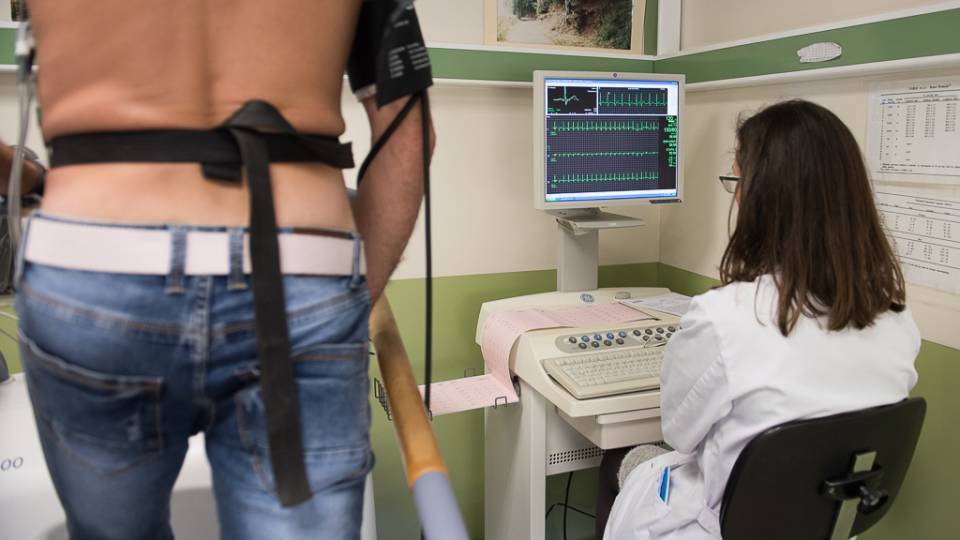Being inactive and sedentary on a daily basis has an impact on the prognosis of chronic respiratory diseases such as COPD and bronchiectasis. Understanding the factors associated with a decrease in physical activity is essential to improve treatment of these patients and to guide new research projects.
A study carried out at Hospital Clínic looked into the clinical and socio-demographic factors associated with higher levels of inactivity and sedentary behaviour. Patients with bronchiectasis were monitored for one year.
To carry out this study, patients with bronchiectasis were visited at the time of inclusion in the study, and after one year. During the two visits, physical activity and sedentary lifestyle were measured over one week with the help of a device (accelerometer). Patients were classified into different groups: active or inactive according to the number of steps walked per day, and sedentary or non-sedentary according to the time they spent awake without moving (seated or lying down). Therefore, four groups were generated according to whether or not they were active and/or sedentary.
In addition, clinical and socio-demographic variables such as quality of life, exercise tolerance, worsening condition, number of hospitalisations during the year of monitoring, lung function and severity of bronchiectasis were recorded.
53 patients with bronchiectasis were included, 37 of whom were women. The average age was 62 years. At the beginning of the study, the groups were distributed as follows: 24 ‘active + non-sedentary’, 3 ‘active + sedentary’, 11 ‘inactive + non-sedentary’ and 15 ‘inactive + sedentary’ patients.
After one year, it was observed that 18 patients (34%) had worse levels of physical activity and sedentary lifestyle. 10 of them were directly classified as ‘inactive + sedentary’, the worst of the 4 groups. The clinical factor related to this change was the number of respiratory infections associated with the disease during the year of monitoring.
Therefore, in patients with bronchiectasis, the number of respiratory infections during the year of monitoring was associated with increased inactivity and a sedentary lifestyle. This means that physical activity and avoiding a sedentary lifestyle seem to be key in preventing worsening condition in people with bronchiectasis. Staying active on a daily basis, with frequent walks and reducing time spent seated, can have a direct impact on these patients’ health.
This study was led by physiotherapist Victoria Alcaraz, a member of the bronchiectasis research line of Dr. Antoni Torres' group.. This is the first study to analyse the factors related to behavioural changes in physical activity and sedentary lifestyle in patients with bronchiectasis.
Author: Victoria Alcaraz, physiotherapist, Respiratory Department at Hospital Clínic




